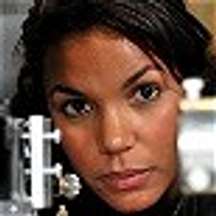
Well I studied MSci Physics at Royal Holloway, University of London, and since I grew up locally in West Berkshire, I had always wanted to visit and potentially work at Diamond Light Source. During my undergraduate degree, I was lucky enough to get the opportunity to work as a summer intern for a few months with the Diagnostics Group. My summer project involved prototyping a scanning knife edge instrument for beam stability measurements on beamlines. After completing my degree, I then went on to do a PhD at CERN where I was based for three years working on a feasibility study of using diffraction radiation for transverse beam size measurement on circular accelerators.
Towards the end of my PhD I saw the job opportunity in the Beam Diagnostics Group at Diamond, and started here at the beginning of June 2014.
In the Beam Diagnostics Group we provide instruments that are effectively the ‘eyes and ears’ of the machine. The instruments I work with diagnose the transverse size, bunch length and pattern of bunches of the electron beam in the storage ring to name a few examples. My experience in previous beam diagnostics projects has introduced me to many different instruments and techniques for obtaining measurements and also given me many transferable skills such as designing optical systems, installing hardware and improving instrument performance through hardware modifications, operation automation via software and improved data analysis.
There is always something interesting and new to learn about. Although I’m working with diagnostics instruments, which all have the same umbrella purpose - to tell us something about the electron beam - there is such a variety! Each instrument is unique and different, with its own individual problems and limitations. I’m constantly reviewing these instruments for ways in which they could be improved, as well as researching completely new instruments that could be even better. I really feel like a physicist tinkering in the lab, learning something new each day.
Beam diagnostics is a specialist field which combines skills from both physics and engineering. You can often work on a project from start to finish, and there is a complementary balance between theoretical and practical work. The summer internship I did at Diamond allowed me to make an informed decision on whether a career in beam diagnostics was right for me, so I highly recommend applying to the summer student programme.